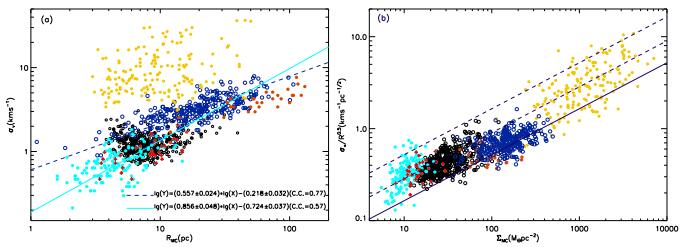Using the Purple Mountain Observatory Delingha 13.7 m millimeter-wavelength telescope, authors from Purple Mountain Observatory (PMO) present the result of an unbiased CO survey in Galactic range of 34.75◦ ≤l≤ 45.25◦ and - 5.25◦ ≤b≤ 5.25◦, and velocity range beyond the Outer arm. A total of 168 molecular clouds (MCs) are identified within the Extreme Outer Galaxy (EOG) region, and 31 of these MCs are associated with 13CO emission. However, none of them show significant C18O emission under current detection limit. They found that the typical size and mass of these MCs are 5 pc and 3×103M⊙, implying the lack of large and massive MCs in the EOG region. Similar to MCs in the outer Galaxy, the velocity dispersions of EOG clouds are also correlated with their sizes, however, are well displaced below the scaling relationship defined by the inner Galaxy MCs. These MCs with a median Galactocentric radius of 12.6 kpc, show very different distributions from those of the MCs in the Outer arm published in our previous paper, while roughly follow the Outer Scutum-Centaurus arm defined by Dame & Thaddeus (2011). Their result may provide a robust evidence for the existence of the Outer Scutum-Centaurus arm. They found that the lower limit of the total mass of this segment is about 2.7×105 M⊙, which is about one magnitude lower than that of the Outer arm. The mean thickness of gaseous disk is about 1.45◦ or 450 pc, and the scale height is about 1.27◦ or 400 pc above the b = 0◦ plane. The warp traced by CO emission is very obvious in the EOG region and its amplitude is consistent with the predictions by other warp models using different tracers, such as dust, HI and stellar components of our Galaxy. 
By with SUN Yan Figure 1. (a) Velocity dispersion σv as a function of size for clouds located in the EOG region (cyan, this work), Galactic Center (gold, Oka et al. 2001), Galactic ring (red and blue, Solomon et al. 1987; Dame et al. 1986), and outer Galaxy (black, Heyer et al. 2001). The dashed and solid lines indicate the linear fitting results to the Solomon et al. (1987) points and the EOG clouds, respectively. (b) Scaling coefficient, σv/R1 2, as a function of the mass surface density. The solid line and two dashed lines show the loci for αvir = 1 (lower), 3 (middle), and 10 (upper), respectively. In both panel (a) and (b), the pluses mark the EOG clouds with 13CO detections. The paper was published in the Astrophysical Journal (2017, ApJS, 230, 17). Detailed information of the paper can be found at: http://adsabs.harvard.edu/abs/2017ApJS..230...17S. |
